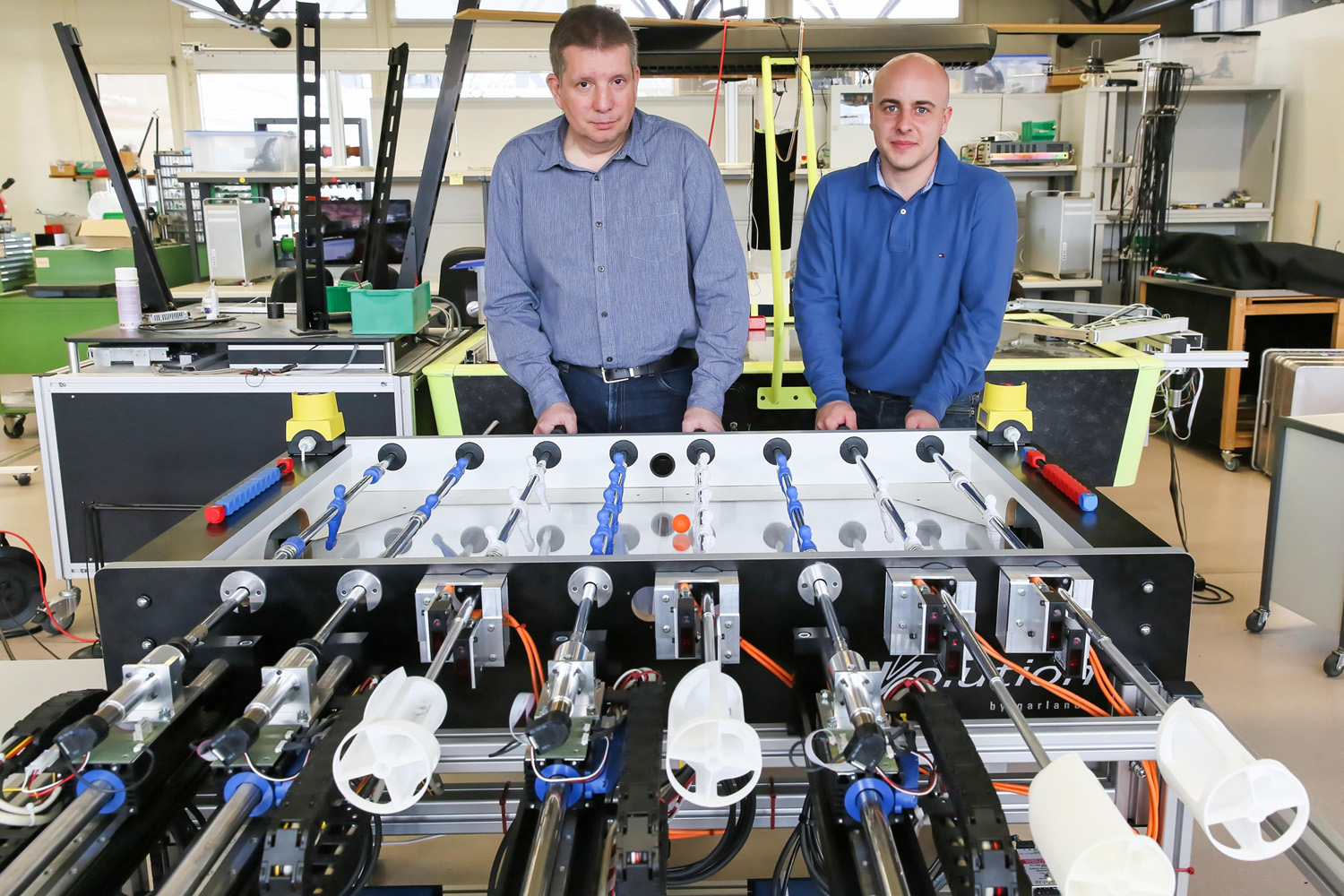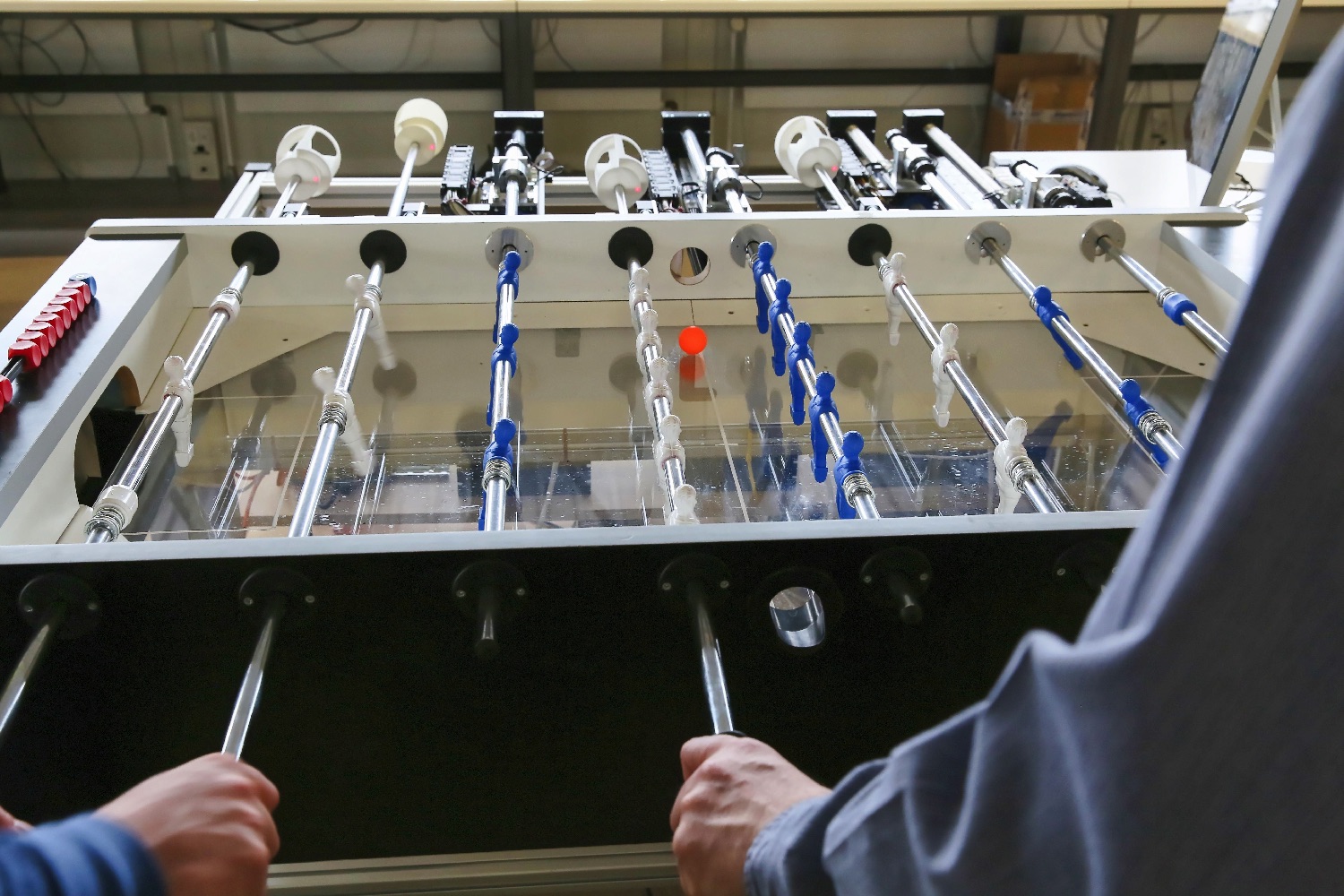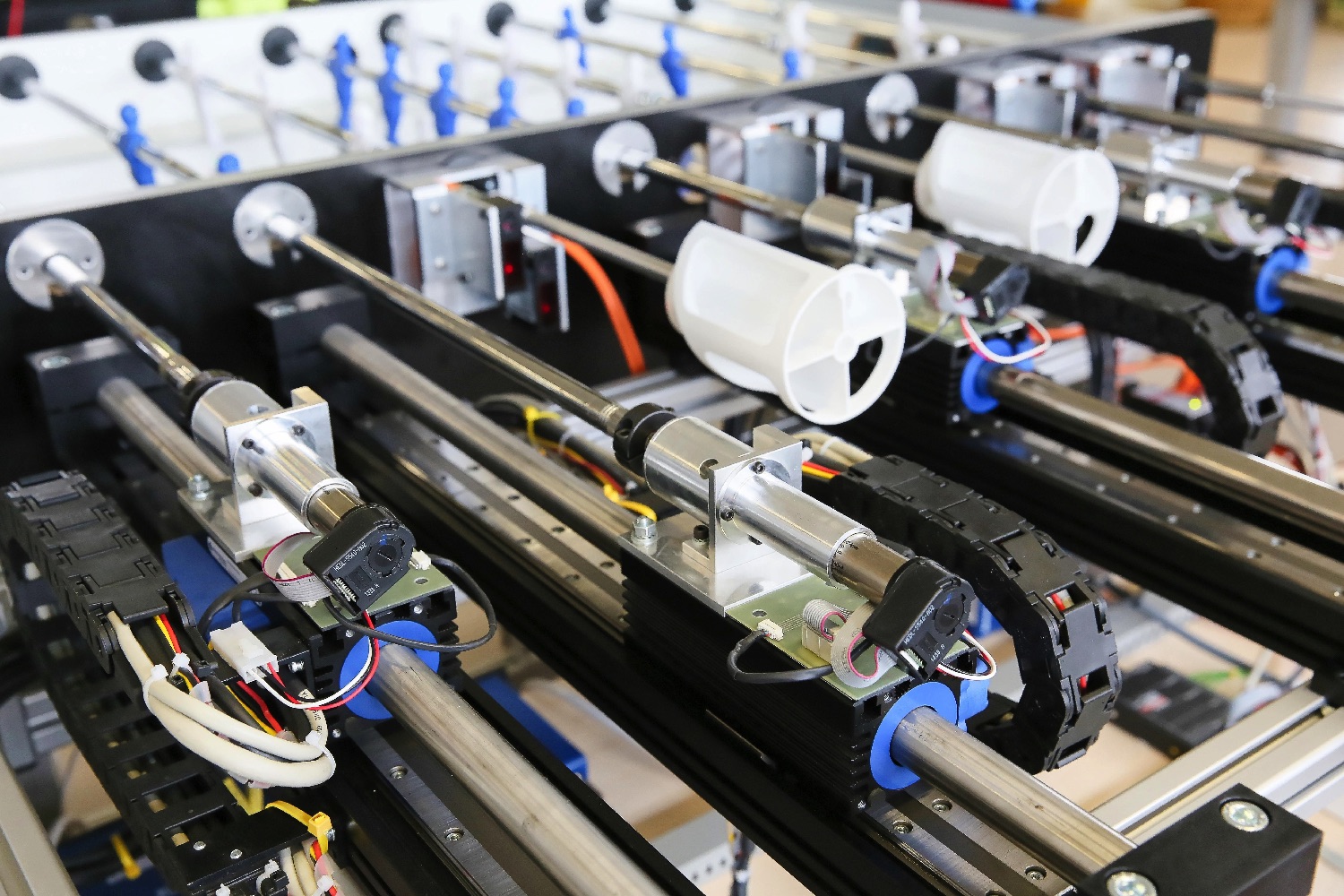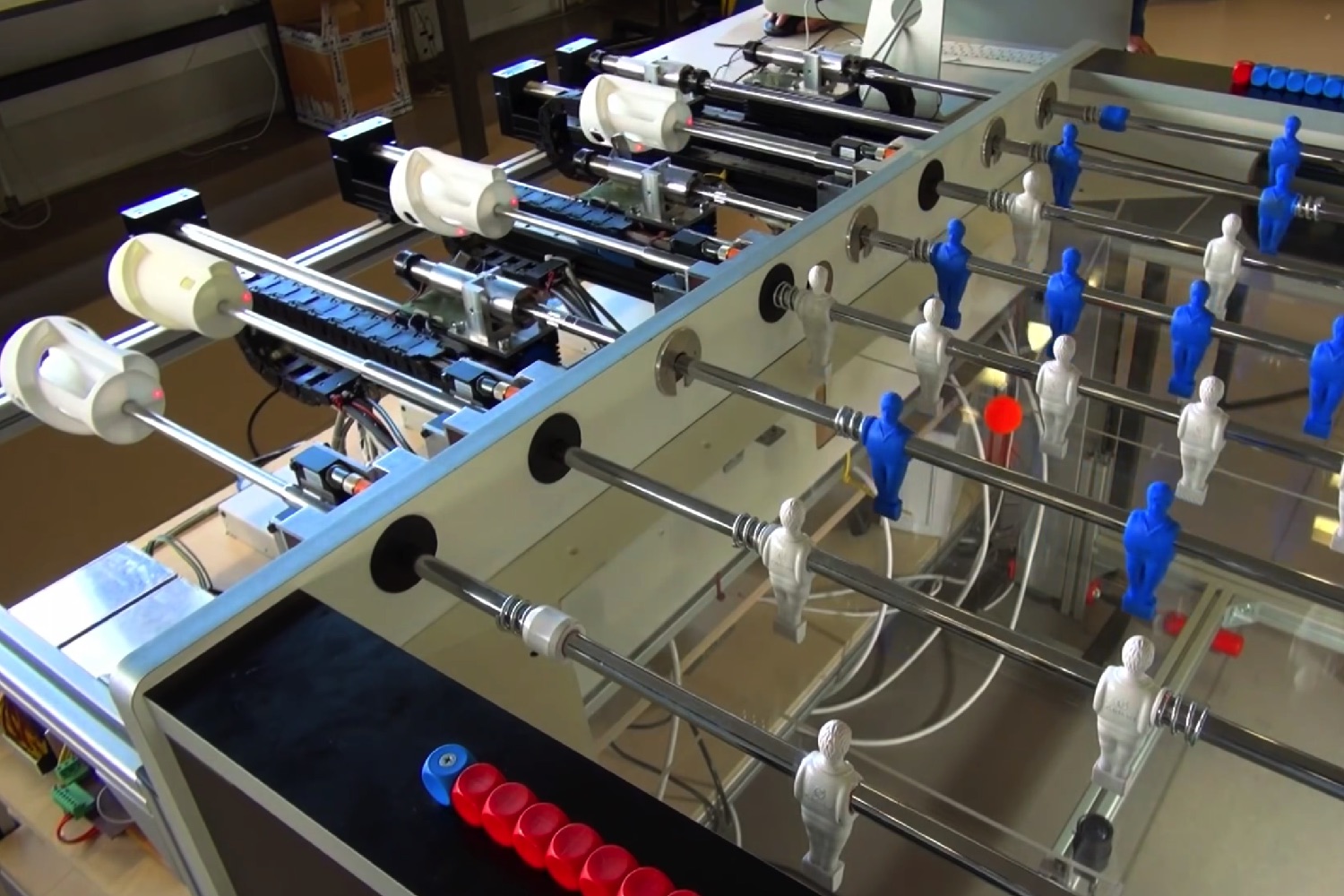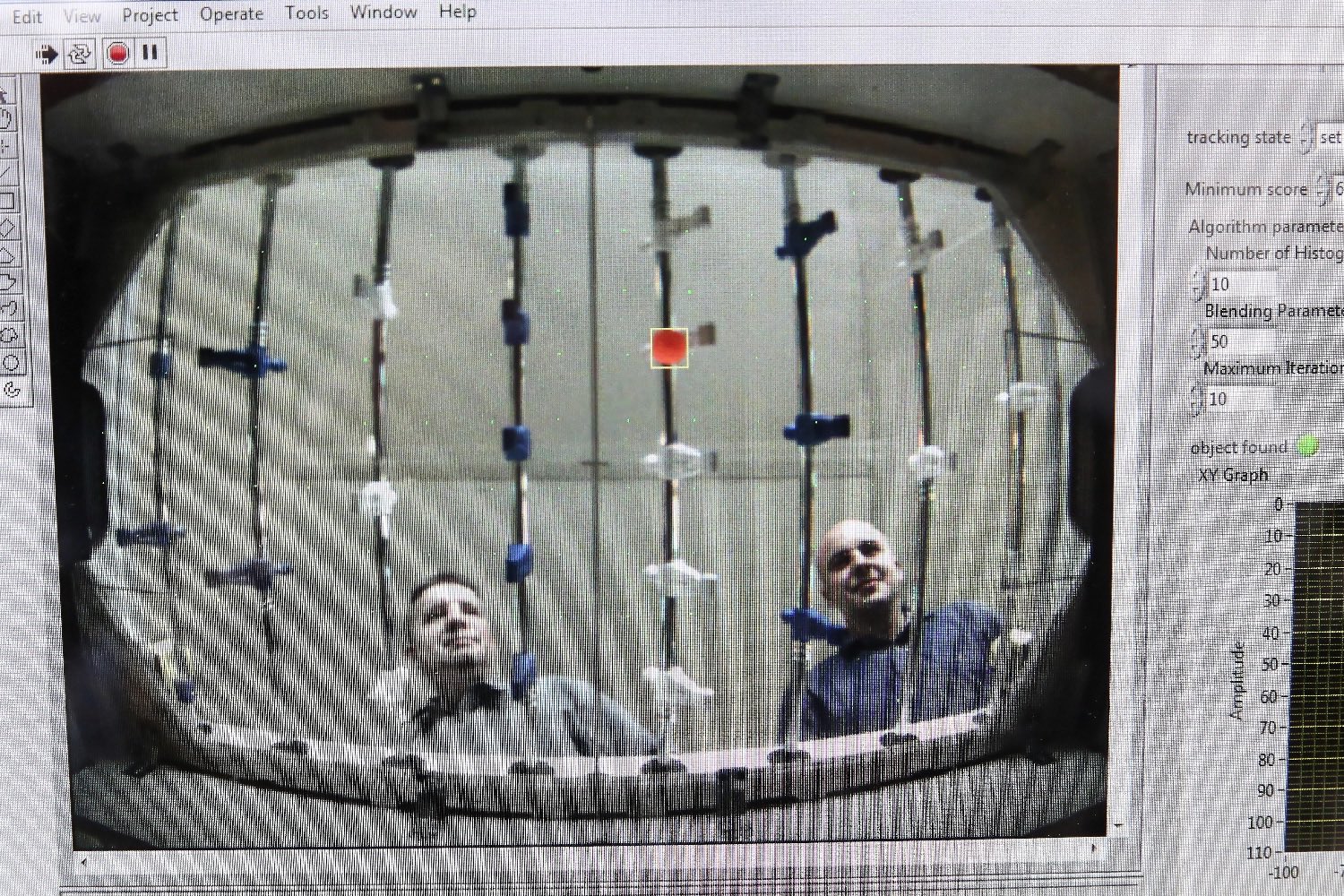Created as a research project for students in the university’s Automatic Control Laboratory, the robot can outclass many human players by using powerful “arms” boasting the same kind of high dynamic linear motors found in manufacturing. It also possesses incredibly keen eyesight, thanks to a high-speed camera located underneath the table’s transparent floor. This camera takes 300 images every second, which are then analyzed by a computer tracking the ball’s movement.
“It’s able to measure the [ball’s] position much faster than a human,” Christophe Salzmann, the scientist in charge of the project, told Digital Trends. “Our specification for the project was to be both faster and stronger than a person. We actually had to reduce some of the power in the [machine’s] rotational motors because they were kicking the ball so hard that it left the play area.”
So just how good is the foosball robot? “At the moment, it can beat beginners or average players who don’t have much of a strategy for playing,” Salzmann continued. “I’ve played quite a few times before, but I certainly wouldn’t call myself an experienced player — and the computer can beat me. We haven’t yet tried it with really strong human players, but at the moment I think a pro or semi-pro player would be able to beat it.”
Part of the reason for this, he explained, is that the robot doesn’t possess much of a strategy. It can’t, for instance, try and fake out opponents, block incoming attacks, or even pass the ball between players. Instead it simply detects where the ball is and then blasts it toward the goal: a technique which works surprisingly well, when combined with its speed and strength.
But improvements are continuing to be made. “We want to add strategy,” Salzmann said. “There are lots of things we could do. Right now, we’re measuring where opponents are positioned, but not acting on this information. We’ve been watching a lot of videos of pro players to see how they play, and we really want to add some of those tricks.”
It won’t be today or tomorrow, but in a few years maybe we’ll be reading about championship-level robot foosball players. Hey, Skynet has to unwind after a busy day somehow, right?
